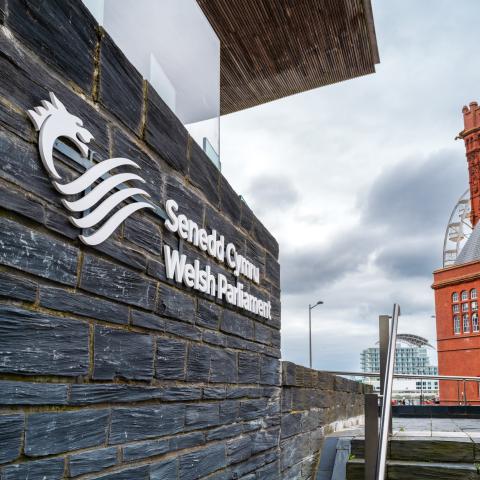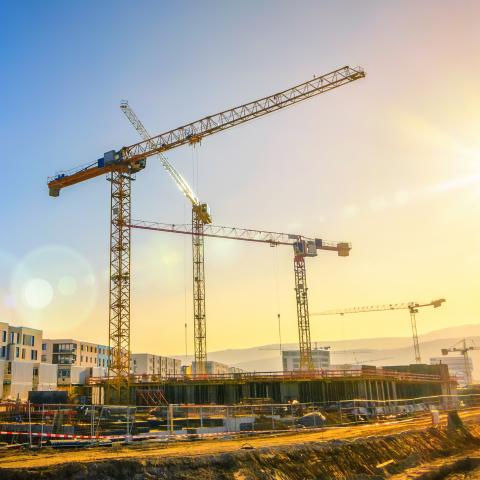'Your home is worthless' - A personal reflection on the cladding crisis

By Perry Miller
Imagine waking up one morning to find that your home is deemed worthless. Worse still, it is clad with panels considered only marginally less of a fire risk than those that were on Grenfell Tower. You then learn that it’s going to cost a huge amount to replace them. But you can’t use the abundant equity you have in your flat to fund your share of the necessary remedial works, because – as I might have mentioned – your home is now worthless (on paper).
This happened to me earlier this year, about a month into lockdown. I can remember the moment exactly: a warm April evening, I was sitting on my deck scanning emails when one from the managing agent, blandly entitled ‘Cladding Report’, caught my eye. It contained the very worst information: the majority of my building is clad in High Pressure Laminate (HPL) panels which need to be removed and, until that can happen, the report recommended a waking watch (24/7 patrol), which could potentially be reduced/removed should a fire alarm upgrade be completed.
In the past, when people have told me that they felt physically sick on learning of bad news, or couldn’t eat, I didn’t really get it. I do now. I found myself bewildered, shocked, quite sad and, yes, without appetite. And no pubs open to drown my sorrows.
There’s been no real anger as I’m not sure where to direct it. Don’t get me wrong, I’m ready to Rage Against The Machine but what’s – or who’s – the target? Not the developer who put the panels on, or indeed the local authority who signed them off: HPL was a popular choice at the time (hence the vast number of buildings that now need to have it taken off) and considered an entirely appropriate product. The Government perhaps? But then surely, they’re correct to say that the panels need to come off. Our freeholder? Only in the sense that I’d like them to pay for the work but I signed a lease that is very clear where the liability lies for structural ‘improvements’: me.
I will admit something: for me, none of this is about safety. I don’t go to bed at night worrying about a fire; on the other hand I do go to bed worrying that I will be woken by the waking watch’s air horn at 3am and have to haul my sorry ass out of bed, evacuate the building and negotiate with the London Fire Brigade, all over a false alarm (twice so far!).
No, for me this is about money. As it is for most leaseholders. Tenants may have a different mindset, I suppose. But tell a leaseholder, in the height of lockdown, that their property is worthless, that the waking watch will cost £12K per month, that the fire alarm upgrade to remove the waking watch will cost £120K and that the remedial work itself will be in the region of £2 million, and see where the balance falls between safety and cost in people’s minds.
To give some perspective, I live in a block of 115 apartments, so I do pay £105 per month for waking watch, willpay £1,050 for the fire alarm upgrade and could pay c.£17,500 for the major remedials. I have a good job; neighbours have been furloughed or made redundant. The service charge just increased by 89%. It’s no surprise then that neighbours don’t ask for the detail of the fire alarm upgrade – just how much it will cost and when it can be done so we can stop paying for a waking watch.
Happily, we have been able to apply to the Government’s Building Safety Fund (BSF) which has been set up assist leaseholders with the cost of the cladding remedial works (neither the waking watch nor the fire alarm upgrade qualify for funding). We’ve passed the initial eligibility checks and are currently issuing the tender for the works. We need to get our final submission in before the end of the year and then, fingers crossed, we get funding and start on site by March next year. To get there, we’ve had to hire a project manager, fire engineer, quantity surveyor, architect and lawyer. Oh yes, and we need planning permission for the works.
I’ve used ‘we’ a lot because as leaseholders we manage our building. We set the service charge, employ a managing agent and are making our own application to the BSF. If that sounds harmonious and a great way to bring people together, trust me, it isn’t. Until the panels come off, no one can sell (unless to a cash buyer) or remortgage their properties. Renting out is possible but not financially rewarding, such is the level of the service charge, and, with all monies diverted to fire safety, other repairs are inevitably delayed. My neighbours and I continue to live together through necessity. And now add lockdown to that recipe.
The cladding crisis is a complicated tale and there’s plenty more to say. I’d like to think that my own experience is helping clients affected by this, providing an insight into how difficult messages can best be crafted and delivered.
Hopefully, I can write again next year, with better news.








